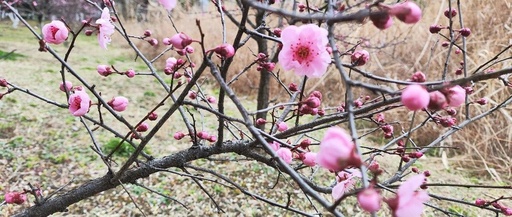The formulas Ma Huang Lian Qiao Chi Xiao Dou Tang (麻黄连轺赤小豆汤), Yin Chen Hao Tang (茵陈蒿汤), and Zhi Zi Bai Pi Tang (栀子檗皮汤) are all used to treat damp-heat, but differentiation of the formulas must be approached from the perspective of the six meridians, the focus of the pathogenesis, and the characteristics of the symptoms. The specific analysis is as follows:
1. Ma Huang Lian Qiao Chi Xiao Dou Tang (麻黄连轺赤小豆汤) Composition: Ma Huang (麻黄), Lian Qiao (连翘根), Xing Ren (杏仁), Chi Xiao Dou (赤小豆), Da Zao (大枣), Sheng Zi Bai Pi (生梓白皮, currently often replaced with Sang Bai Pi (桑白皮)), Sheng Jiang (生姜), Gan Cao (甘草). Six Meridian Attribution: Tai Yang and Yang Ming combined disease with dampness. Pathogenesis Characteristics: Exterior pathogen unresolved, stasis heat internally, with dampness accumulation. Both exterior and interior are affected, with damp-heat retained internally, unable to escape outward.
Key Points for Differentiation: Exterior Symptoms: chills, fever, no sweating, body itching or swelling. Interior Symptoms: bright yellow skin, difficult urination, irritability. Tongue and Pulse: red tongue with white or yellow greasy coating, floating and rapid or wiry pulse. Treatment Principle: Release the exterior, disperse pathogens, clear heat, and resolve dampness. Through Ma Huang and Xing Ren to disperse the lung and release the exterior, Lian Qiao and Chi Xiao Dou to clear heat and resolve dampness, addressing both exterior and interior.
2. Yin Chen Hao Tang (茵陈蒿汤) Composition: Yin Chen Hao (茵陈蒿), Zhi Zi (栀子), Da Huang (大黄).
Six Meridian Attribution: Yang Ming interior excess heat syndrome (damp-heat stagnation). Pathogenesis Characteristics: Damp-heat obstructing the middle jiao, obstructing the qi of the bowels, with stasis heat causing jaundice. Key Points for Differentiation: Interior Excess Heat Syndrome: bright yellow skin like orange, fever, thirst, abdominal fullness with resistance to pressure, dry or sticky stools. Damp-heat Symptoms: short and red urination, heaviness in the head and body, sweating not smooth. Tongue and Pulse: red tongue with thick yellow greasy coating, slippery and rapid or deep and forceful pulse. Treatment Principle: Unblock the bowels, drain heat, resolve dampness, and reduce jaundice. Yin Chen Hao clears and resolves damp-heat, Zhi Zi clears heat, and Da Huang promotes bowel movements, allowing damp-heat to be eliminated through the two excretions.
3. Zhi Zi Bai Pi Tang (栀子檗皮汤) Composition: Zhi Zi (栀子), Huang Bai (黄柏), Gan Cao (甘草).
Six Meridian Attribution: Yang Ming damp-heat mild syndrome. Pathogenesis Characteristics: Damp-heat retained internally, but the heat is relatively mild, not forming an interior excess, primarily characterized by heat stagnating and injuring fluids. Key Points for Differentiation: Mild Damp-Heat Syndrome: lighter yellow skin, mild fever, irritability, thirst, and yellow urination. No interior excess: no abdominal fullness or constipation, or only slight abdominal distension. Fluid Injury Symptoms: may be accompanied by dry mouth, restlessness, and insomnia. Tongue and Pulse: red tongue with thin yellow greasy coating, rapid or thin rapid pulse. Treatment Principle: Clear heat, dry dampness, and protect fluids. Zhi Zi and Huang Bai clear and resolve damp-heat, while Gan Cao harmonizes and moderates, focusing on lightly clearing and penetrating heat.
Key Points for Differentiation of the Three Formulas | Six Meridian Attribution | Presence of Exterior Symptoms | Degree of Interior Excess Heat | Core Symptom Group | Characteristics of Two Excretions | Tongue and Pulse Characteristics Ma Huang Lian Qiao Chi Xiao Dou Tang | Tai Yang and Yang Ming combined disease with dampness | Present | Light interior heat, dampness predominant | Chills and fever + bright yellow skin + difficult urination | Difficult urination, normal or normal stools | Red tongue with white greasy coating, floating and rapid pulse Yin Chen Hao Tang | Yang Ming interior excess heat | Absent | Heavy interior excess heat, obstructed qi | Bright yellow skin + abdominal fullness and constipation + short red urination | Constipated stools, short red urination | Red tongue with thick yellow coating, slippery and rapid pulse Zhi Zi Bai Pi Tang | Yang Ming damp-heat mild syndrome | Absent | Light interior heat, fluid injury | Bright yellow skin + irritability + fever + no abdominal fullness/constipation | Yellow urination, normal or loose stools | Red tongue with thin yellow coating, thin rapid pulse
Clinical Application Approach: 1. **Differentiate Exterior and Interior**: First observe the presence of exterior symptoms (chills, floating pulse), if present, choose Ma Huang Lian Qiao Chi Xiao Dou Tang. 2. **Assess Interior Excess**: If no exterior symptoms, further observe the degree of interior excess: abdominal fullness, constipation, and solid pulse indicate use of Yin Chen Hao Tang; only bright yellow skin, irritability, and rapid pulse without excess indicates use of Zhi Zi Bai Pi Tang. 3. **Observe Two Excretions**: If difficult bowel movements are significant, use Da Huang; if difficult urination is predominant, use Yin Chen or Zhi Zi, and if exterior is closed, open the pores. All three formulas adhere to the principle of “providing a route for the pathogen to exit,” but the approaches differ: either opening the exterior, unblocking the bowels, or promoting urination, requiring precise selection based on the layers of pathogenesis.

